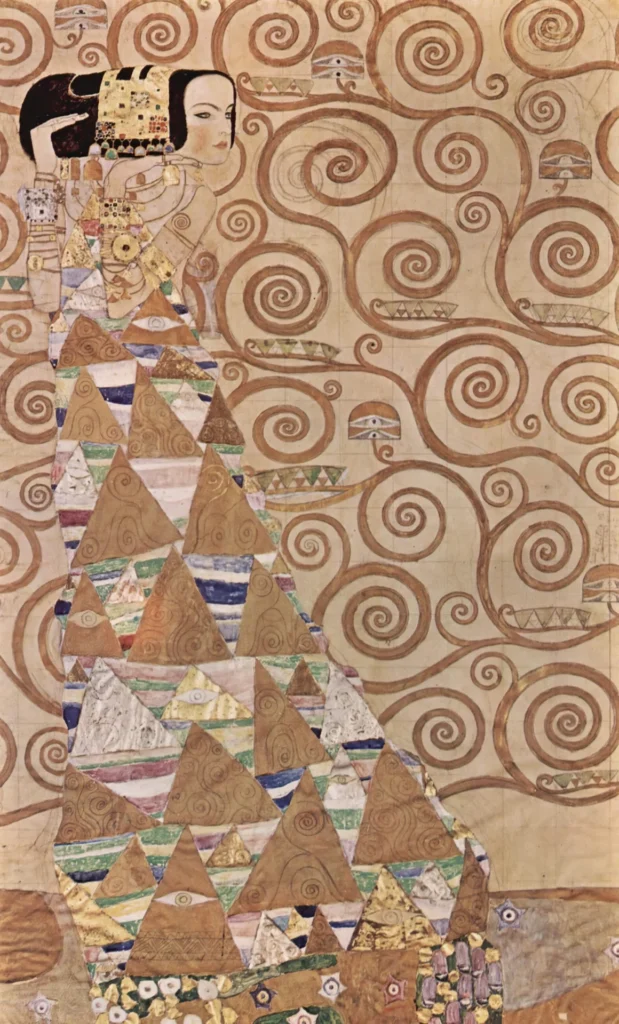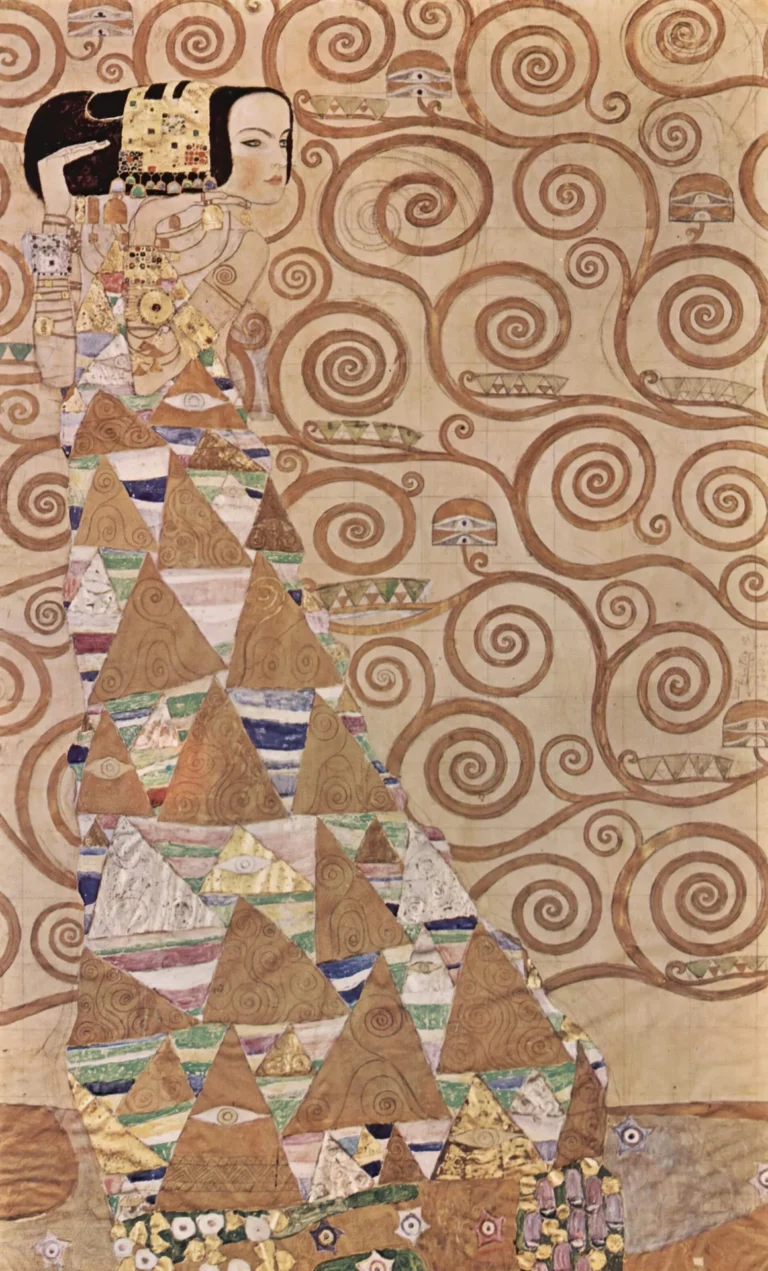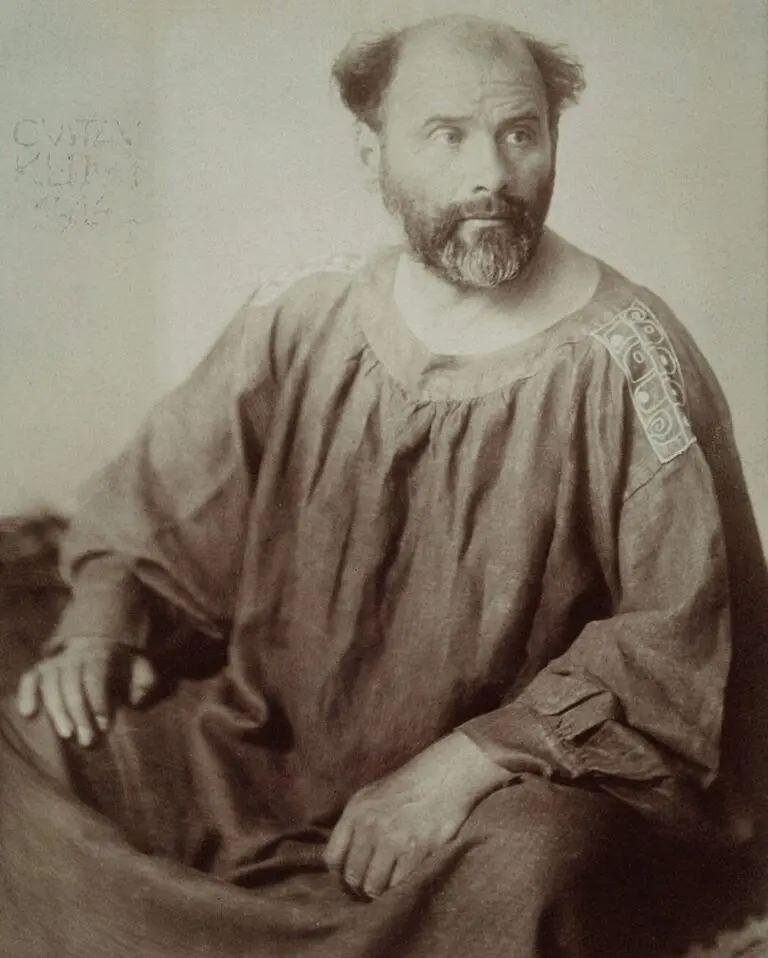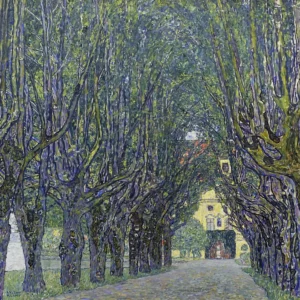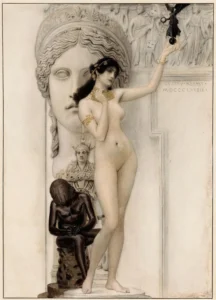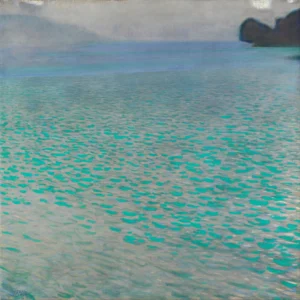Expectation (from Tree of Life)
Expectation is part of the Stoclet Frieze, a significant work by Gustav Klimt completed in the early 20th century that showcases his unique amalgamation of styles and influences. The figure, influenced by Egyptian art, presents a woman in profile with an eloquent posture, symbolizing anticipation. Positioned alongside the famous 'Tree of Life' within the Palais Stoclet, this figure is not just a standalone artwork but a crucial part of a grand narrative that delves into themes of waiting and fulfillment.
1905 - 1911
About the Artwork
The Stoclet Frieze, completed by Klimt between 1905 and 1911, embodies the concept of 'Gesamtkunstwerk' (the total work of art), and features a range of interconnected themes that speak to the broader existential concepts of human experience. Expectation was intended to represent the state of anticipation in life’s journey, flanking its counterpart 'Fulfillment,' thus emphasizing a narrative of longing and eventual realization. Drawing from various cultural inspirations, particularly ancient Egyptian motifs, Klimt crafted this figure with a distinctive profile that enhances the figure's symbolic presence amidst the opulent decorations of the Palais Stoclet.
Did You Know
Liked what you see? Add it to your collection.
Enjoyed reading? Share it.
... continued
Inspiration and Style
The figure of Expectation is heavily influenced by Egyptian art, evident in the woman's profile and the position of her arms and hands. This style is characteristic of Klimt's eclectic use of various artistic traditions.
Context within the Stoclet Frieze
Expectation is one of the figures flanking the "Tree of Life" on the walls of the dining room in the Palais Stoclet in Brussels. The frieze, designed by Klimt, was part of a larger artistic project led by Josef Hoffmann, embodying the concept of 'Gesamtkunstwerk' or 'the total work of art.'
Original Title and Association
Originally titled "The Dancer," the figure of Expectation also draws inspiration from a popular dance of the time. This blend of influences adds to the richness and diversity of Klimt's work.
Symbolism and Placement
Expectation is paired with another figure titled "Fulfillment" (originally "Embrace") on the opposite wall, creating a narrative of anticipation and realization. These figures, along with the "Tree of Life," contribute to the overall thematic depth of the Stoclet Frieze.
Execution and Collaboration
The Stoclet Frieze, including Expectation. was created using a collaborative process involving several craftsmen such as gilders, marble workers, and enamellers, following Klimt's detailed instructions on colors and materials.




